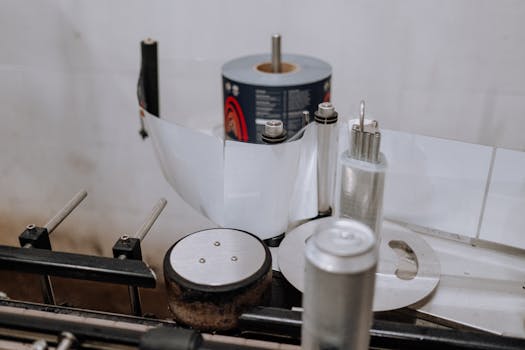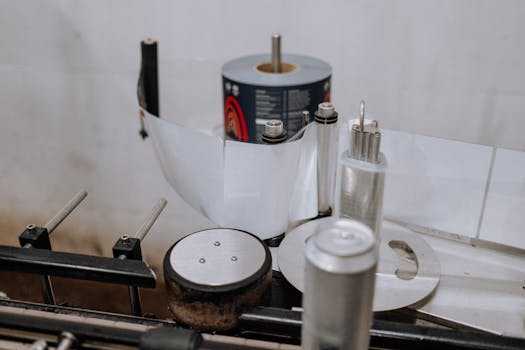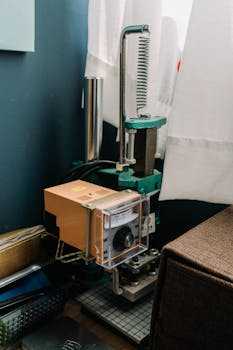
Revolutionizing Warehouses: How Automation Boosts Packaging Efficiency and Cuts Costs
The modern warehouse is undergoing a dramatic transformation, driven by the relentless pursuit of increased efficiency and reduced operational costs. At the heart of this revolution lies automation, particularly within packaging operations. From automated palletizing and robotic picking to sophisticated warehouse management systems (WMS), advancements in technology are reshaping how businesses handle their packaging processes, leading to significant improvements in speed, accuracy, and overall profitability. This article delves into the key ways automation is impacting packaging efficiency and explores the benefits and challenges businesses face in adopting these innovative solutions.
The Growing Need for Automated Packaging Solutions
E-commerce growth, rising consumer expectations for faster delivery, and persistent labor shortages are pushing businesses to seek more efficient packaging solutions. Manually handling packaging tasks is time-consuming, prone to errors, and costly in the long run. The pressure to optimize supply chains and meet demanding order fulfillment targets necessitates a shift towards automation. This is evident in the increased investment in automated packaging machinery, robotic packaging systems, and intelligent conveyor systems. These technologies are no longer luxuries but necessities for businesses aiming for competitive advantage in today's dynamic market.
Key Benefits of Automated Packaging Systems:
- Increased Throughput: Automation significantly increases the speed of packaging processes. Robots and automated machines can work tirelessly and consistently, exceeding human capabilities in terms of volume and speed. This translates to faster order fulfillment and improved customer satisfaction.
- Reduced Labor Costs: While initial investment in automated systems can be significant, the long-term cost savings related to labor are substantial. Automation reduces reliance on manual labor, leading to lower payroll expenses and reduced risk of workplace injuries.
- Improved Accuracy and Reduced Errors: Human error is a common issue in manual packaging processes. Automation minimizes this risk, ensuring consistent and accurate packaging every time. This reduces waste, improves product quality, and minimizes costly returns.
- Enhanced Efficiency and Productivity: Automated systems optimize workflows, minimizing downtime and maximizing the utilization of resources. They can seamlessly integrate with existing systems, creating a more efficient and streamlined packaging operation.
- Improved Traceability and Inventory Management: Advanced automated systems offer enhanced traceability, allowing businesses to track packages throughout the entire supply chain. This enhances inventory management and improves visibility, minimizing stockouts and overstocking.
Types of Automation in Packaging Operations
The landscape of automated packaging solutions is diverse, offering a range of technologies to meet various needs and budgets. Some of the most prevalent solutions include:
1. Robotic Packaging Systems:
Robotic arms and collaborative robots (cobots) are increasingly used for tasks such as picking, placing, and palletizing. These robots offer flexibility, speed, and precision, handling a wide range of packaging materials and product types. Robotic palletizing systems, in particular, are experiencing a surge in popularity due to their ability to automate a traditionally labor-intensive task.
2. Automated Case Packing and Sealing Machines:
These machines automatically fill cases with products, seal them, and often apply labels, significantly accelerating the case packing process. Advanced systems can handle a variety of case sizes and product configurations, optimizing space utilization and minimizing waste. The integration of case erecting machines further streamlines the process.
3. Automated Conveyor Systems:
Intelligent conveyor systems play a crucial role in transporting goods throughout the packaging process. These systems utilize sensors, scanners, and software to manage the flow of products, directing them to the appropriate stations and optimizing throughput. Automated guided vehicles (AGVs) and autonomous mobile robots (AMRs) are also becoming increasingly important for efficient material handling within warehouses.
4. Warehouse Management Systems (WMS):
WMS software plays a vital role in managing and optimizing the entire packaging process. This software integrates with automated systems, providing real-time visibility into inventory levels, order status, and packaging efficiency. Effective WMS implementation is crucial for maximizing the ROI of automated packaging investments.
Challenges and Considerations for Implementing Automation
While the benefits of automation are clear, businesses need to carefully consider the challenges associated with implementation:
- High Initial Investment: The cost of purchasing and installing automated packaging systems can be significant, requiring substantial upfront investment.
- Integration Complexity: Integrating automated systems with existing equipment and software can be complex and time-consuming, requiring specialized expertise.
- Maintenance and Repair: Automated systems require regular maintenance and repair, adding to the overall operational cost.
- Training and Staff Adaptation: Employees may need training to operate and maintain the new equipment, requiring time and resources.
- Scalability and Flexibility: Businesses need to ensure that their chosen automation solutions are scalable and flexible to accommodate future growth and changing demands.
The Future of Automated Packaging
The future of packaging operations is undoubtedly automated. Further advancements in artificial intelligence (AI), machine learning (ML), and the Internet of Things (IoT) will continue to drive innovation in this field. We can expect to see more sophisticated robotic systems, smarter conveyor systems, and even more integrated WMS solutions, leading to even greater efficiency, accuracy, and cost savings. Companies that embrace automation and proactively adapt to these technological advancements will be well-positioned for success in the increasingly competitive world of e-commerce and logistics. The adoption of predictive maintenance will also play a crucial role in minimizing downtime and optimizing operational efficiency. Investing in automation is not just a trend; it's a strategic imperative for businesses seeking to thrive in the modern supply chain.



















